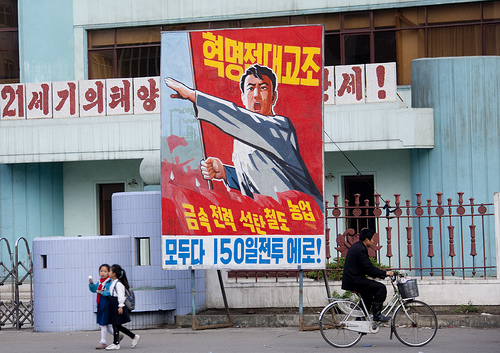The article was not as informative as I hoped. But here are a few lines that I thought were interesting:
Q: When you were talking with Kim Jong Il, was it your impression that he wants more investment from South Korea? That he wants to do more business with your country?
A: He showed a lot of enthusiasm. He said he hopes the North and South Korean government can talk things through so to have a lot of South Korean companies enter the North, and he also said that since they have the natural resources and the South has the skills to sell, if both sides work together he expects the North and South to prosper.
Comment: There is a vast literature on the relationship between natural resources, economic growth, and conflict. Natural resources tend to be the kiss of death for widespread economic development and “democracy.” Unfortunately, given the way the North Korean system is managed, I would expect most of the revenues from increased natural resources exports to go to the DPRK leadership with little tangible benefit to the North Korean people.
The Kaesong industrial complex, the joint facility run by North and South, what is the future of that complex?
Currently we are only operating the first block, but I am sure that once things get settled down by both governments, we have many plans for the second block as well. A hotel needs to be built. We need to have hospitals, post offices, so I am expecting gradually that we will expand business there.
I am more optimistic about the Kaesong Zone than I am about the DPRK’s desire for increasing natural resource exports because the workers at Kaesong actually process resources to build the textiles. As a result, their productivity has increased over time and the workers have been able to capture some of that extra value themselves in the form of higher incomes (although at a ridiculously steep “tax rate” since the DPRK government keeps the vast majority of their salaries). If Kaesong was closed down the workers would certainly be worse off, and so would all of those who depend on them. Despite the DPRK’s efforts to increase tensions this year, business never closed down at Kaesong. It could be that the DPRK leadership now considers Kaesong too big to fail.
Read the full interview below:
Doing business in North Korea
CNN
10/19/2009




